Kinza is one of the favorite East Kitchen Spicy Herbs, which people are used for giving a spicy taste and aroma to give a dish, and also apply for medical purposes and cosmetology. The green leaves of the cilanthole appear to the green part of the parsley, they divinely shall draw the taste of meat dishes, and the seeds of the plant (coriander) give them a spicy and unforgettable fragrance. Kinza is unpretentious in growing winter-hardy culture, popular among gardeners and dacities. How to plant a cilantro in the open soil and greenhouse, which useful properties have a spice for the body, read further.
What does Kinza look like in the open ground - the description of the culture
Coriander is low, from 50 to 70 cm annual plant, which refers to the umbrella family. Often, the coriander is called a cilantro (green part of the plant), a Chinese or mexican parsley, caalandra. Coriander is most often used when the crop fruit name is called. According to historians, the birthplace of fragrant greens is the eastern part of the Mediterranean. Later, Kinza spread to European countries, in the Caucasus, where she won a special popularity.
Botanical description of Kinse
- Cinse stems are a reprehension, the upper part of the bush is branched. The height of the grass does not reach more than 70 cm.
- Kinza leaves are similar to pests leaves. I have a simple, half-dissected form. Depending on where the leaves grow, their location changes on the stem. The upper leaves are located on the stem, and the bottoms have stuffs.
- Spiced Green Flowering Time - June, July. Coriander bush blooms with small flowers: white or pale pink, collected in umbrella inflorescences.
- Fruits of plants (coriander) are solid, ribbed, rounded brown shade seed shapes. The period of their ripening is September. Coriander has a specific spicy fragrance.
- Fresh fragrant greens and dry fruits of annual culture are used in food. Coriander essential oil is successfully used in medicine and cosmetology.
Kinza, photo
Kinza: benefits and harm
Kinza is rich in essential oils, pectin and alkaloids. The spiced grass contains a huge amount of vitamins, calcium, sodium, iron and copper.
The useful properties of coriander are invaluable for the human body:
- Kinza contributes to the removal of severe and toxic metals from the body, which lead to hormonal failures, neurological diseases. Spicy greens are recommended to eat while taking antibiotics.
- With regular use of cilantro in food, the sleep is improved, the level of anxiety is reduced. Kinza is an excellent preventive tool against Alzheimer's disease, Parkinson, sclerosis.
- The green part of the plant is useful to add to salads, smoothies, people suffering from diabetes. Coriander reduces blood sugar levels and promotes normal liver operation.
- Thanks to the large content of potassium in cilantro, the plant is useful to add to dishes with hypertension. Coriander contributes to cleansing the walls of vessels from harmful cholesterol.
- Kinse seeds have antibacterial properties. This is an excellent means to prevent urinary tract infection.
- The plant normalizes the work of the gastrointestinal tract, prevents gas formation, heartburn, stomach spasms, protects the body from food poisoning.
- According to research, kinza reduces the risk of colon cancer.
- The green part of the plant is used as healing the remedy for solar burns, allergic dermatitis, urticaria.
Contraindications
Despite the storehouse of vitamins, excessive consumption of Coriander is contraindicated to people with a stomach ulcer and those who recently suffered a stroke. The spice is not recommended for future mothers and women during lactation.
Kinza in the open soil: varieties
Choosing a variety of coriander for growing in greens, you should consider the yield and taste of spicy grass.
Popular cilanthole varieties for cultivation in open ground:
- The king of the market - early grade, is distinguished by a magnificent and volumetric juicy greens.
- Amber - has a delicate taste and aroma and density of the bush.
- Alekseevsky - has a mean duration of ripening, bloom later. The grade is perfectly withstanding small frosts.
- Borodinsky is a compact and high bush with an average maturation.
- Venus - perfect litter for vitamin salads, has a gentle taste.
- The debut is a variety for the early production of fruits.
Landing kinsea in open ground
For growing cilantro in the country to get a large harvest of plants, you should choose the right place to fit.
- Kinza prefers areas that are well illuminated by the Sun or are in a light shadow. If the greens will not be enough illumination, the stalks will begin stretching up, weakened and lose their taste. The best place for landing the cilantro - smooth or sublime area, without a close running ground. Excess soil moisture can provoke the development of fungal diseases.
- Kinza is cultivated on a lightweight, fertile soil of neutral acidity, which is well to skip moisture and air. Autumn primer preparation is needed to planting seeds in spring. To do this, with a portion of the site into the soil, organic and complex potash-phosphoric fertilizers add, at the rate of 40 grams per square meter.
How to plant a cilanthole in the open soil
Coriander - cold-resistant culture. The plant is quite good with small frosts up to 5 degrees of frost. Therefore, in order to get an early spring greens, you can embark on the cilantro in the early spring as soon as the soil warms up. It is possible to plant seeds throughout the season. Kinse seeds do not require preliminary training, do not need soak.
Kinza in the open soil: sowing scheme
- Crickerels or plot should be thoroughly explode and moistened.
- It is possible to plant the coriander in several ways: by rows, by observing the distance between them 15 cm, put into the wells, located at a distance of 10-15 cm from each other or the corrosion on the site allocated under the landing. Seeds should be plugged into the ground by 1.5-2 cm.
- After planting, the seeds are abundantly watered.
- The first shoots germinate in 5-20 days, provided that the soil is enough to be free (up to 6 degrees of heat). Also, the time of sewwits affects the variety and the quality of the sowing material. The fresh seeds, the faster shoots appear. How kinza is closed, you can see the following photo:
Kinza in open ground: care
Kinza - unpretentious garden culture, the care of which is quite simple and consists in conducting the following manipulations:
- Raying beds, removal of weed grass between rows and wells.
- Regular watering and spraying landings. It is impossible to allow excessive moisture in the ground and avoid dryness.
- Sleeping landing.
- Kinza does not need fake, provided that the soil was fertilized in spring or autumn.
- Kinza - grass, which breeds seeds. After ripening fruits, they are collected, dried.
- Seeds retain their germination for 3 years. In addition, Kinza breeds self-sowing.
How to grow a cilantro in the open soil in the greenhouse: landing and care
Kinza -Anomatic delicious greens, healthy health. To ensure itself with vitamins in winter, it can be planted in a greenhouse. Green growing in greenhouse has several advantages:
- The ground part of the plants is not attacked by slugs and other pests.
- By reducing the vegetative period of ripening of greenery, the first green harvest can be collected 2 weeks after the kinse landing.
- Kinza does not take much space in the greenhouse. Since it combines well with other vegetable crops, it can be planted in a bent.
- The greenhouse retains the necessary level of humidity of the soil.
- Landing and caring for cilantro in the greenhouse is identical to the landing in the open soil. Greens needs regular, but moderate watering. To preserve the optimal humidity in the soil and protection against weeds, the soil mulch is recommended by sawdust, nut shell. The plants stems are cut, when their height reaches 15-20 cm in length, before the emission of a bloody. Since after flowering, the leaves of the cilantro are rude and losing their taste.
Kinza in the open soil: pests and diseases
The main diseases that are subject to kinza are malievable dew and ramularity. To avoid infection, it is impossible to allow the mooring of the soil. At the first signs of the disease, the affected bushes should be removed and processed by the piece of garden of fungicides. Greens treated with fungicides cannot be used in food.
Kinza is attacked by pest insects as an umbrella mole, bugs, a winter scoop that can destroy the harvest. Insecticidal preparations are used as preventing pests of cilantro.
Cick collection and seed harvesting
The best period for cutting the cilantro stems on the greens - before the start of flowering and the release of the plant plant, which comes on the 40th day after sowing. The optimal period of cutting the stems for greens, when they reach a height of 10-15 cm. It should be borne in mind that when cutting the third part of the bush, its growth stops. To provide a coriander further growth, only the upper stems should be cut off, leaving shoots located at the bottom. The kinsee greens has a spicy specific aroma, it is used when cooking vitamin salads, smoothies, added to soups, to meat dishes, which it gives a unique taste. Greens is perfectly frosting for the winter, it can be dried and stored in dried.
After flowering, the plant forms fruits that ripen to the beginning of autumn and are ready to collect when they acquire a brown shade and begin to crumble. Dried coriander is a spicy spice that is added to meat dishes, with vegetables conservation, and also collected as a seed material for planting in the new season.
Kinza is a useful spicy greens that gets well with any plants. Coriander can be planted with other spicy herbs: Tmin, Anis. Kinza Growing Dachnik is not much difficult. Having highlight a small garden or a plot in the greenhouse under the planting of greenery, you can provide yourself with fresh vitamin greenery and spicy fruits for a whole year.

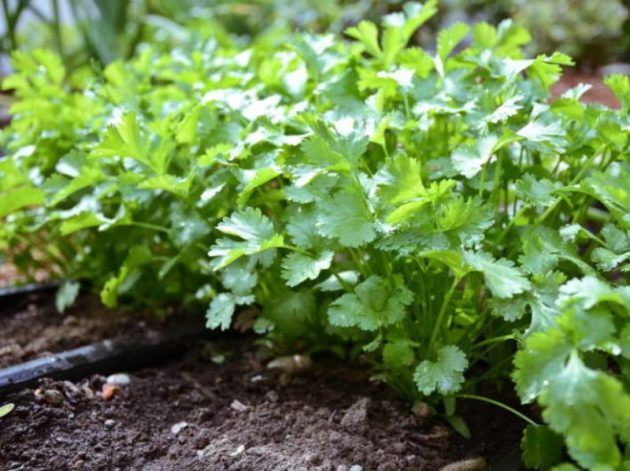


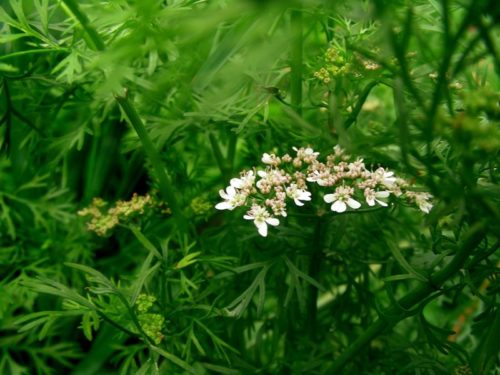


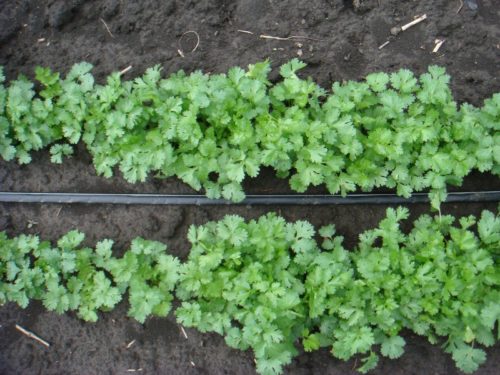
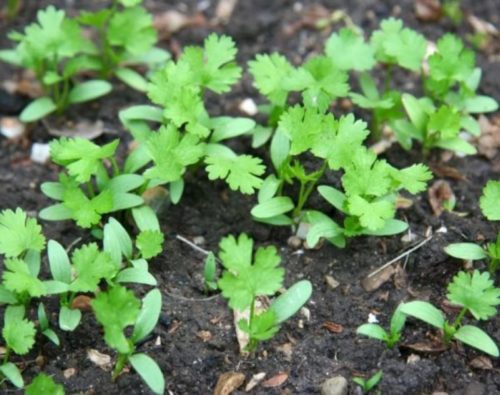


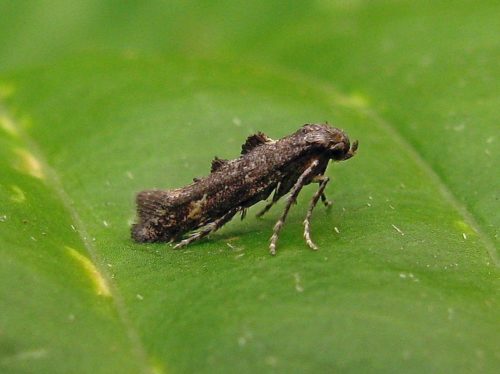
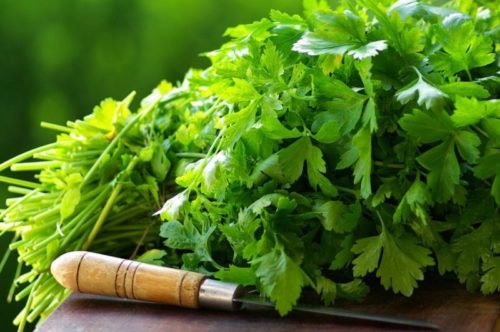
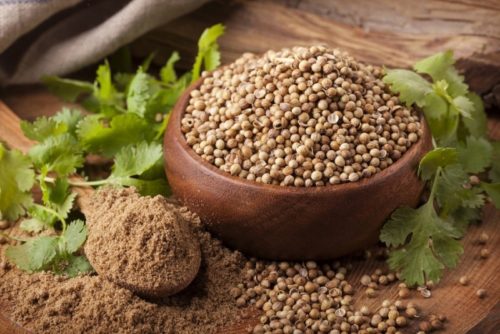












 Start a discussion ...
Start a discussion ...